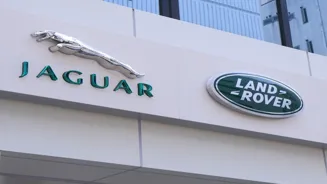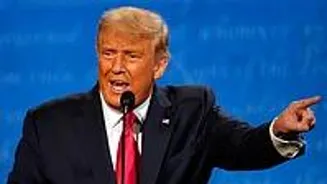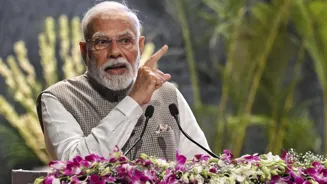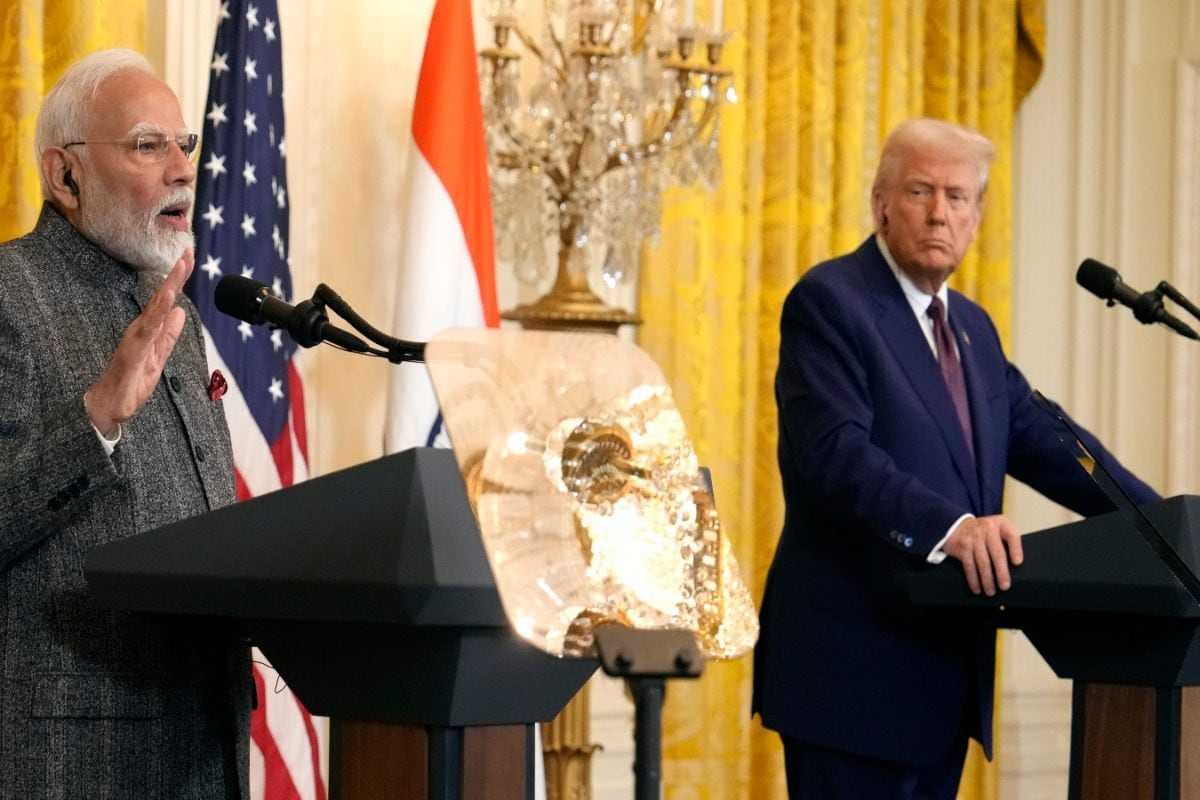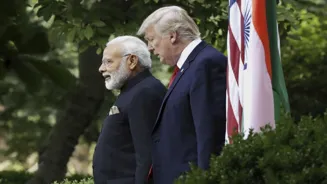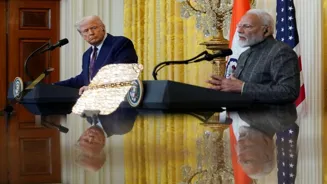What is the story about?
Jaguar Land Rover (JLR) is grappling with the growing impact of global trade tariffs, which are beginning to weigh heavily on its performance. According to data compiled by Elara Securities Research, JLR reported a Q1 tariff impact
of €254 million, representing 3.8% of its total sales.
This places JLR among the more heavily affected automakers, with only Porsche experiencing a higher tariff burden as a percentage of revenue.
While JLR’s total revenue stood at €6.6 billion, the tariff cost per car hit €2,910—one of the highest among its peers. Only Porsche, with a steep €5,678 tariff per car, faces a more significant per-unit impact.
In comparison, BMW and Mercedes (Cars) have managed to cushion the impact more effectively due to
diversified production bases and stronger global supply chains. BMW’s tariffs represent just 2% of its sales, while Mercedes fares even better at only 1.5%—the lowest among the group analysed. Their per-car tariff impacts, at €948 and €799 respectively, highlight their relative efficiency in managing global trade dynamics.
Audi, with a revenue base of €17.1 billion, faces a tariff impact of €594 million (3.5% of sales), further emphasizing the challenges premium carmakers face. Yet it’s clear from the numbers that JLR’s margins
are being squeezed harder than most of its competitors.
Several factors contribute to JLR’s tariff vulnerability:
UK-based manufacturing drives exposure
Jaguar Land Rover’s primary manufacturing footprint remains in the UK, which significantly increases its exposure to trade barriers. Since Brexit, UK-based exports face more friction—especially when exporting to the EU or markets like China and the US—leading to higher logistics costs, customs duties, and tariff-related complexities.
Limited localisation outside the UK
While JLR has expanded into Slovakia with a new plant in Nitra, the facility is relatively new and not yet producing at a scale large enough to offset the tariff burden from UK-based exports. In contrast, German rivals like BMW and Mercedes have more mature and diversified global manufacturing hubs, including local production in China and the US, helping them sidestep many tariffs.
Transition phase for Jaguar Brand
Jaguar is currently undergoing a major
transformation, repositioning itself as an all-electric luxury brand. This transition has added internal complexity and cost, making it harder for JLR to absorb external shocks like tariffs. The lower sales volume during this phase means tariff costs have a proportionally larger financial impact.
Premium price point amplifies tariff costs per vehicle
JLR operates in the premium/luxury segment, meaning each unit already has a high production and compliance cost. When tariffs are added on top—especially without enough
localisation—the per-car cost skyrockets (€2,910 per car, second-highest after Porsche). This eats into margins or forces difficult pricing decisions.
Less vertical integration compared to rivals
JLR depends more heavily on external suppliers for components than some of its German counterparts, which increases vulnerability when importing parts across tariff-heavy borders. It also limits flexibility in moving parts of the supply chain quickly in response to trade changes.
Currency
fluctuations post-Brexit
Since JLR reports in GBP and operates heavily in EUR- and USD-dominated markets, currency volatility further compounds the effective impact of tariffs, especially when calculated in euros for comparison. This makes cost management more challenging.
ALSO READ | US plans executive order to exempt gold bars from tariffs, market awaits clarity
This places JLR among the more heavily affected automakers, with only Porsche experiencing a higher tariff burden as a percentage of revenue.
While JLR’s total revenue stood at €6.6 billion, the tariff cost per car hit €2,910—one of the highest among its peers. Only Porsche, with a steep €5,678 tariff per car, faces a more significant per-unit impact.
In comparison, BMW and Mercedes (Cars) have managed to cushion the impact more effectively due to
Audi, with a revenue base of €17.1 billion, faces a tariff impact of €594 million (3.5% of sales), further emphasizing the challenges premium carmakers face. Yet it’s clear from the numbers that JLR’s margins
Several factors contribute to JLR’s tariff vulnerability:
UK-based manufacturing drives exposure
Jaguar Land Rover’s primary manufacturing footprint remains in the UK, which significantly increases its exposure to trade barriers. Since Brexit, UK-based exports face more friction—especially when exporting to the EU or markets like China and the US—leading to higher logistics costs, customs duties, and tariff-related complexities.
While JLR has expanded into Slovakia with a new plant in Nitra, the facility is relatively new and not yet producing at a scale large enough to offset the tariff burden from UK-based exports. In contrast, German rivals like BMW and Mercedes have more mature and diversified global manufacturing hubs, including local production in China and the US, helping them sidestep many tariffs.
Transition phase for Jaguar Brand
Jaguar is currently undergoing a major
Premium price point amplifies tariff costs per vehicle
JLR operates in the premium/luxury segment, meaning each unit already has a high production and compliance cost. When tariffs are added on top—especially without enough
Less vertical integration compared to rivals
JLR depends more heavily on external suppliers for components than some of its German counterparts, which increases vulnerability when importing parts across tariff-heavy borders. It also limits flexibility in moving parts of the supply chain quickly in response to trade changes.
Currency
Since JLR reports in GBP and operates heavily in EUR- and USD-dominated markets, currency volatility further compounds the effective impact of tariffs, especially when calculated in euros for comparison. This makes cost management more challenging.
ALSO READ | US plans executive order to exempt gold bars from tariffs, market awaits clarity
Do you find this article useful?
